Commentary &Daily post 29 Jan 2007 07:46 am
BAFTA’s & Rotocapture
The nominees for the BAFTA Awards were announced last week. This is the British equivalent of the Academy Awards. Generally, a great winner emerges in the animated categories, particularly the shorts. This year is no exception:
Two of the nominees for Best Animated Feature match the Oscars: Cars, Happy Feet.. Flushed Away replaces Monster House on their list – appropriately, since it’s animated.
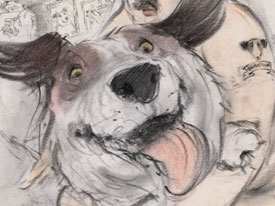 Nominees for Best Animated Short film are:
Nominees for Best Animated Short film are:
DREAMS AND DESIRES – FAMILY TIES – Les Mills/Joanna Quinn
GUY 101 – Ian Gouldstone
PETER AND THE WOLF – Hugh Welchman/Alan Dewhurst/Suzie Templeton
Peter and the Wolf by Suzie Templeton is a one hour animated film to the Prokofiev score. Click here to see a trailer.
Guy 101 by Ian Gouldstone is a short film about a man who hears a story about a hitchhiker from the other side of the Internet. The film was done as a student film for the Royal College of Art Animation. See it here.
Dreams and Desires: Family Ties by Joanna Quinn is a film about a woman and her home movies of a wedding. Brilliantly conceived and ridiculously skipped over by the US Oscar voters. It’s certainly the best animated short of the last year. The film is part of Don Hertzfelt & Mike Judge’s Animation Show which played in NY laste week.
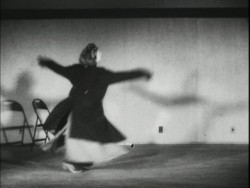 – A lot has been discussed in the past week about the validity of Motion Capture as a form of “Animation.” This conversation was instigated by the Oscar nominations. Two of the three nominations for the Best Animated Feature were created using MoCap.
– A lot has been discussed in the past week about the validity of Motion Capture as a form of “Animation.” This conversation was instigated by the Oscar nominations. Two of the three nominations for the Best Animated Feature were created using MoCap.
Mark Mayerson questioned if we shouldn’t be deciding whether we’re officially going to call Motion Capture animation. And if we shouldn’t, then is Cars the only officially nominated animated feature?
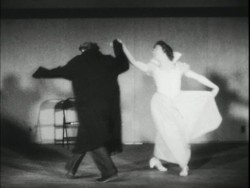 Now, of course, Motion Capture animators feel slighted. But they would have to agree that the soul, the impetus behind the movement does not come from them, but rather from the live action actor that was originally “captured”?
Now, of course, Motion Capture animators feel slighted. But they would have to agree that the soul, the impetus behind the movement does not come from them, but rather from the live action actor that was originally “captured”?
The comparison has been made that
traditional animation has often used Roto- scoping in creating animation. In fact, Disney’s Cinderella became the first feature that was wholly filmed in live action prior to 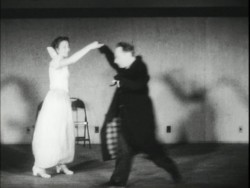
animation.
However, I’d like to make the point that the two methods are unrelated except in that live actors are involved. The difference to me, is that one is inspiration and the other is the heart of the animation.
When an animator is given live action reference material – the rotoscoped/traced drawings from the live action acting – he/she refers to it but animates to what is necessary for the scene. the animator is the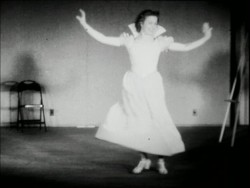 actor using the prerecorded voice, the physical rotoscoped reference, and anything available to help give the character a “soul.”
actor using the prerecorded voice, the physical rotoscoped reference, and anything available to help give the character a “soul.”
Even in Bakshi’s use of Rotoscoping in Lord of the Rings, the animators were allowed to push the drawings beyond the live action, alter the drawings to get them on character, and essentially produce the action.
When an “animator” gets the MoCap filmed live action, the actions are set. The actors have done the movement. What remains is 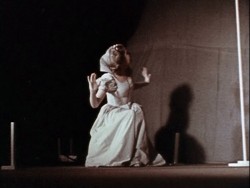 the proper positioning of the characters within the created scene, cleaning up the characters and constructing the scene. There’s no real animation, as we’ve come to know it.
the proper positioning of the characters within the created scene, cleaning up the characters and constructing the scene. There’s no real animation, as we’ve come to know it.
For years now, I’ve called this electronic puppetry, but that’s not really accurate. The site Digital Puppetry seems to have labelled it correctly.
Younger animators seem to have less a problem with all of this labelling and irritation accrued by older veterans. In fact, the 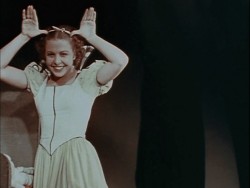 problem really is a threat to the “animator.” Last week, I hyperbolically suggested that the days of the animator were a dead as the dodo. You see, animation has turned into a computer effect. Live Action directors are now directing “animated films” in greater numbers. Peter Jackson had his “Gollum,” Robert Zemeckis had his “Polar Express” (and produced “Monster House”), Ang Lee had (and in fact acted) The Hulk. The “animators” have become interchangeable and almost irrelevant.
problem really is a threat to the “animator.” Last week, I hyperbolically suggested that the days of the animator were a dead as the dodo. You see, animation has turned into a computer effect. Live Action directors are now directing “animated films” in greater numbers. Peter Jackson had his “Gollum,” Robert Zemeckis had his “Polar Express” (and produced “Monster House”), Ang Lee had (and in fact acted) The Hulk. The “animators” have become interchangeable and almost irrelevant.
You aren’t able to define anyone’s animation style behind any of Tom Hanks’ characters in Polar Express. You can only see Tom Hanks or Savion Glover in Happy Feet.
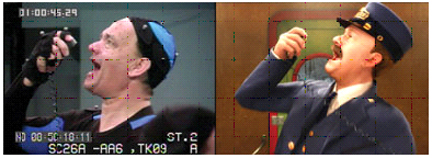
(All images except this one enlarge by clicking them.)
In Snow White, you can tell which scenes Grim Natwick animated; his style of animation comes across. It doesn’t matter how many rotoscoped drawings were given to him as reference. Grim animated the scenes.
In the big picture what really does all this quibbling matter? I enjoyed Happy Feet more than I did Cars. Cars was a better constructed film, both were riddled with cliches. I was entertained by all that dance. I like Savion Glover (though I would have preferred watching Savion Glover.) The film also seemed to have some sort of misguided representation of a message. I appreciated that. Cars, to me, had only a lot of loud noisy reverberation. From the first frame, the film came screaming. The artistry behind the imagery was astounding, as expected from Lasseter, but the film was boring.
Of course, this is only my opinion based on my biases. You have your opinions based on your biases. However, as an Academy voter, I’ll probably vote for Cars because I think technically it was a better “Animated” film. Isn’t that the category?
If you haven’t read Mark Mayerson or Keith Lango on this subject, you should.
Ward Jenkins reminded me that he had two interesting posts about Polar Express on his site. It gives an interesting look at how to correct the “Zombie Eyes” on the characters. #1 and #2. Check them out, if you haven’t seen them.
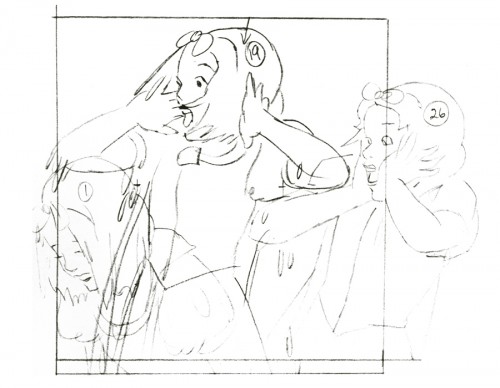
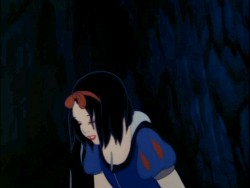
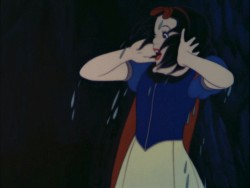
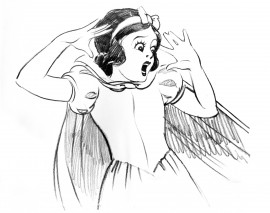
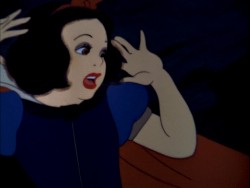

on 03 Feb 2007 at 7:19 pm 1.Meg-Ann said …
I thought Happy Feet only used Mo-Cap for the dancing scenes?
on 03 Feb 2007 at 10:16 pm 2.Michael said …
Motion Capture was used throughout the film. Only the walrus type characters toward the end were animated. The dancing sequences got the most attention because of Savion Glover’s involvment in chorographing and dancing for it.
on 12 Feb 2007 at 3:48 pm 3.Phil said …
Having read a lot of blogs on the motion-capture vs animation debate, and having done a fair stretch of work in motion capture I think the following statement needs a bit of clarification:
“When an “animator†gets the MoCap filmed live action, the actions are set.”
This just simply isn’t true. I’ve yet to work on a production where the performance recorded on stage is ‘set’. It always requires a combination of motion-editors and animators to push the performance to a new level. You simply cannot capture performance that 100% represents a director’s vision on screen. This modern type of ‘performance-based animation’ is no different from the old method of rotoscoping. Do you believe that it requires less artistry to make human performance believable and engaging on penguins, or on a giant ape, than it does to take inspiration from humans caught on film and transport that to hand-drawn humans? Perhaps this misconception is a carry-over from the use of motion-capture in games, where it often does go straight from stage to screen – but this is definitely not the case with feature films. And I also don’t think that ‘traditional’ animators are under any threat from the new technology – quite the contrary. A truly great film will combine the best of both worlds and play to their strengths – biped motion for performance capture, and traditional animation for everything else! This really allows directors to broaden their vision and create works of a scale that are very difficult to accomplish with either medium on their own.
PS. Not only the Walrus characters were animated. Motion capture was only used where the penguins behaved in way that humans could mimic on a stage. So whenever they were swimming or sliding they were animated. As were the seals, birds (though one scene was mocap-based with a lot of animation overlay) and killer whales. All the facial was keyframe, and the motion-editors animators did a huge amount of performance enhancement when characters were rolling on the ground where motion data was lacking. A combination of motion-edit and animation combined to enhance the performance as the production progressed, since the nuance to really sell a scene could only be locked down as the cut was refined – long after the mocap had been recorded.
on 12 Feb 2007 at 4:41 pm 4.Michael said …
Thanks for the detailed clarification. However, it isn’t much different, really, than I expected. Of course, it takes an enormous amount of work from animators to push the Live Action performances. I don’t for a second think the actors in Monster House moved completely as they did in the final films. Actions have to be heightened and movements sometimes exaggerated.
However, much of the performance is based on the live action. More so than a good animator would depend on the rotoscoped drawing. Gulliver in the Fleiscer film is probably the closest relation rotoscoping has to MoCap. But remember, that use has been put down for generations by animation purists – and for good reason. It’s just not good.
Take a look at the recent Action Analysis sheets posted on Hans Perk’s site A Film LA.
on 13 Feb 2007 at 2:32 am 5.Phil said …
I’ve had a bit of a think about this and confess that my first response was a bit of a knee-jerk reaction to the constant battering that the motion-capture artform receives. It has really got me thinking about the what the term ‘animated’ traditionally represents, and what it has come to represent.
The notion of the animated film was forever changed with the release of Toy Story (a little irony that Lasseter is now portrayed as the traditionalist up against the new-comer in the form of motion-capture, eh). What ultimately swung the world in the 3d direction was that the films were good. Perhaps technically flawed, but emotionally engrossing.
I thoroughly enjoyed reading the Action Analysis on the Hans Perk site. There is great value in this methodology, but there is also an undercurrent of nostalgia that implies deficiency in all methods other than those defined as traditional. This is an analysis that is really only of value to ‘purists’ as it completely negates the audience as an active participant in the filmmaking process.
I suppose its relation to this article centres around the ideal of what constitutes the term ‘animated’, and what, within that, represents ‘good animation’. This will always be subjective because it does not engage in the emotive aspect of what is being animated. On the one hand, animated films are made for an audience – and yet the ‘technique’ somehow becomes more important than the audience’s impression. This tastes much like Don Graham’s ‘morale-sucking mechanism’ – the superiority of form over substance.
This argument, in relation to awards, serves only to relgate the status of the award to the category of craft, or technical achievement.
Does a motion-capture film belong in the ‘Animated Film’ category? Should there be seperate craft awards for 2D traditional animation, 3D traditional animation and 3D CG ‘in an animated style’ feature work? And then what would win the ‘Best Animated Feature Film’ Award? With these subsidiary categories, would the technique be a primary concern? Or would the achievement of the film-maker in an ‘ original world aside from our own’ be paramount?
on 20 May 2009 at 12:55 am 6.Ha said …
>>However, much of the performance is based on the live action. More so than a good animator would depend on the rotoscoped drawing. Gulliver in the Fleiscer film is probably the closest relation rotoscoping has to MoCap. But remember, that use has been put down for generations by animation purists – and for good reason. It’s just not good.
I love how petty and snarky this comes off as.
on 20 May 2009 at 12:57 am 7.Ha said …
All this motion capture hub-bub is the equivalent to ‘they tuke urr geeobs,’ really. That’s all it seems like, beyond the dabbling on, here and there, about how it’s ‘clearly inferior product,’ and uses live action ‘just too much.’